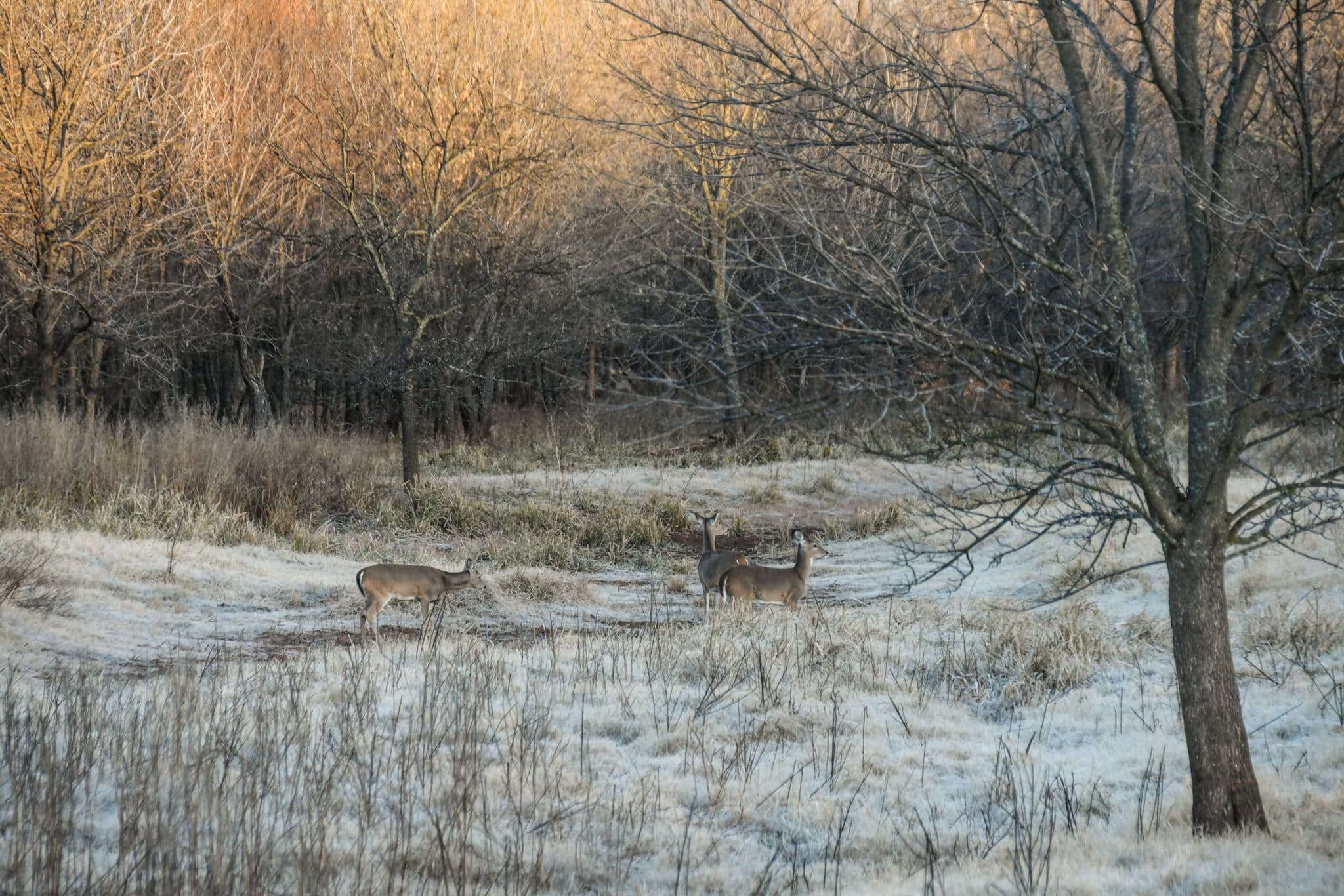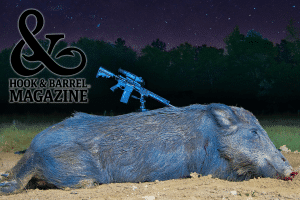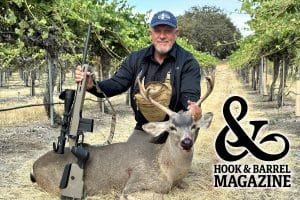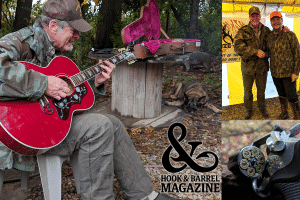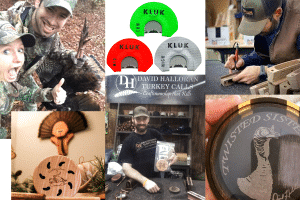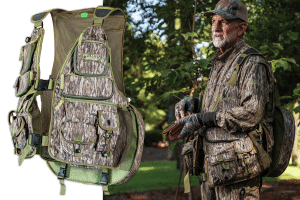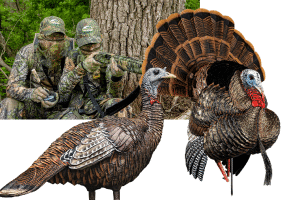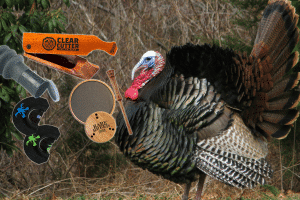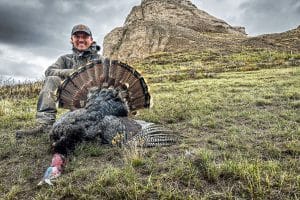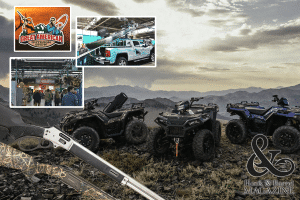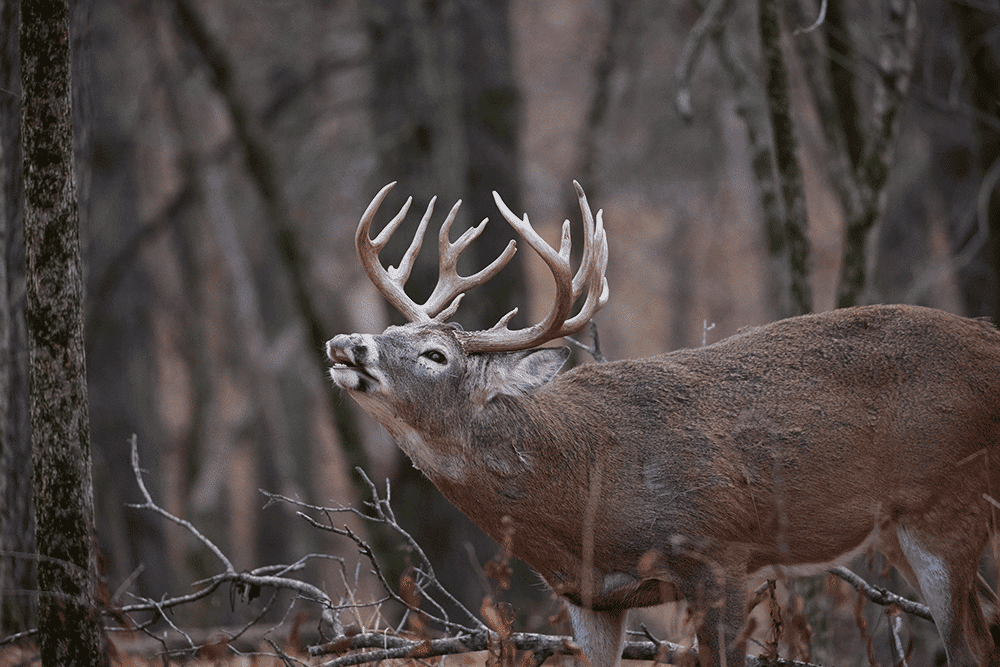
When Is Deer Rut? Why normally shy and mostly nocturnal whitetails lose their minds every November.
A misty rain had just fizzled out, and the sun broke through the clouds when a chaotic thrashing of leaves shattered the stillness of the woods. It was not the occasional light footfall of a feeding deer, and it was not the rhythmic jump-thump of a whitetail in escape flight. It definitely wasn’t a squirrel, despite how the pesky critters had caused me to mistakenly reach for my shotgun several times throughout the morning. No, this was the distinctly frantic shuffling of leaves created only when a buck is in pursuit of a hot doe.
There isn’t a sound more thrilling when you’re sitting in a treestand in the heart of Illinois’ big buck country. Unless maybe if it’s accompanied by the deep-throated grunts a mature buck sometimes utters during the chase.
As any hunter who’s been lucky enough to observe this aspect of the whitetail mating ritual can tell you, by the time you hear a chase, the deer are already in your lap.
That was the case on that particular November morning in 2020. The doe ran right under my stand before I could even lift the shotgun from its hanger. It didn’t help that I wasn’t looking at the gun. Instead, my eyes were frantically scanning the woods for the giant buck that trails every running doe during the whitetail rut.
Except there was no giant buck trailing this doe.
Instead, there were three small-racked juniors in hot pursuit. They were crisscrossing each other’s paths in bursts of speed. Followed by brief hesitations to check the doe’s location.
Mouth open wide and panting, the doe stopped about 10 yards from the base of my tree. The middle-sized buck of the three promptly made his move and bred her. After which all four took off and ran out of sight, the chase picking up where it left off.
The deer hunters among you are now saying, “But that’s not how it works. The biggest bucks chase the does and get to do the breeding!”
There are no rules during rut

I’m no biologist, but one thing I know from 40-plus years in the whitetail woods: There are no rules during the rut.
My friend Bob Humphrey is a biologist and outdoor writer, and he had this to say about the rut. “It’s our nature as humans to try to sort things into neatly defined categories, but nature is chaotic. Bucks and does exhibit certain ritual behaviors during the breeding season like seeking, chasing, and mating. They don’t follow an orderly routine. Bucks seek does when they’re in the mood, chase does when they encounter them, and breed them when they’re receptive. The best we can do is generalize about these behaviors.”
Hunters especially rationalize the whitetail rut in hopes of tagging a giant buck. We read articles about it and talk about it happening in phases, thinking we can predict what the deer, and especially bucks, will do.
What hunters often miss, and what non-hunters never see, is the awesome power of nature that drives these behaviors. For white-tailed deer, most of which mate only during a brief, approximate two-week window each year, that drive is uncontrollable.

What’s really happening
It doesn’t help our understanding when we use terms that confine our thinking. If you ask a hunter about the rut, they’ll tell you it’s the week or so when bucks breed does. In reality, the rut is about a three-month process that starts with bucks being antsy and frustrated while waiting for the does to be ready. It ends when the last few does that didn’t get bred in the main window cycle back into estrus and are finally bred. But it’s those crazy 10 to 14 days in the middle that get all the attention.
That’s when bucks cruise the woods with reckless abandon, searching for a whiff of estrous scent that signals a doe is ready to breed. Does, which seemingly want nothing to do with the bucks, scatter at the sound of an approaching male. Even a doe in estrus leads the males on a frantic chase before exhaustion or some signal in her brain tells her the moment is right to stop, or “stand,” and be bred.
For hunters, it means an opportunity to see wary old bucks that rarely show themselves during daylight any other time of year. For those who don’t hunt, it means deer tearing through yards, crashing into fences or store windows and, unfortunately, vehicle grilles. About 200 people are killed every year in deer-vehicle accidents.
According to the Michigan Office of Highway Safety Planning, more crashes occur in November, which includes the peak of the Michigan whitetail rut, than any other month. Those statistics are mirrored throughout the whitetail range, with peak accidents coinciding with peak deer breeding activity.

The Bottom Line
In short, whitetails lose their minds as the drive to breed trumps all their normal behaviors and precautions.
While there are few rules for individual deer during the rut, there is a distinct and important rhythm for deer as a whole. It’s the need for a rhythm that likely is behind a deer’s irresistible urge to breed when it does. Timing, after all, is everything.
“The primary selective force that behind rut timing is survival,” Bob says. “Does must be bred at the optimal time for survival of their offspring the following year. If they’re bred too early in the fall, there might not be sufficient spring nutrition to support late gestation and newborn fawns. Mate too late, and fawns won’t have time to reach sufficient experience and stature to survive the winter.”
Predators
Walking filet mignons, whitetails have been a top choice for discerning predators for millions of years. It takes a fairly large animal to catch and pull down a full-grown deer. That’s not the case for young whitetails, especially newborns.
Coyotes, black bears, and bobcats love an easy meal, and although whitetail fawns are born scent-free and with an instinct for remaining motionless. Those defenses are paper armor against sharp teeth and claws. Many fawns wind up, literally, in the bellies of the beasts after being found curled up and motionless where their mothers hid them.

To ensure enough fawns make it through the vulnerable early weeks, whitetails have developed call a pulse-birthing or saturation mechanism. With nearly all the young being born in a very tight window, the predators simply can’t get them all. Synchronous births (and therefore conceptions) ensure the future of the species.
Not only is it important that births happen at once, but it also matters when all those births occur.
The new greenery of spring provides the tastiest and most nutritious deer food of the year. Whitetail mothers need to replenish fat reserves after months of lean pickings through the winter. They also need to provide their young with milk loaded with protein and other nutrients that encourage growth. Early spring is ideal for both. The explosion of new leaves and branches also helps conceal fawns from the eyes of hungry predators.
White-tailed deer don’t think about those things, though. Such musings are reserved for us.
But sometimes we think too much and fail to appreciate the incredible power of instinct and nature’s drive to survive. If you ever need a reminder, head to the deer woods in November.
Click here, to learn more about scouting in the off season. Also, here are 15 tips and tactics for success.







